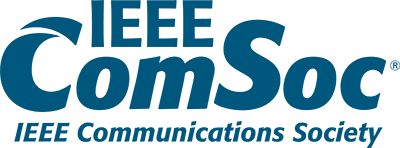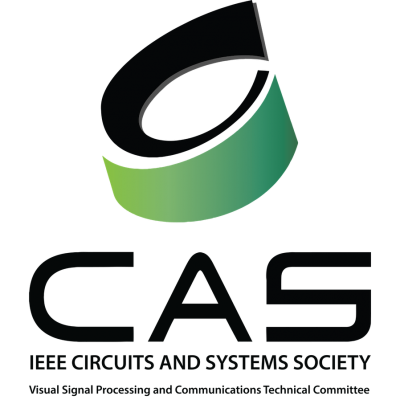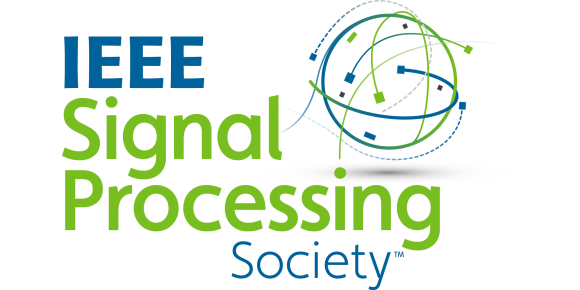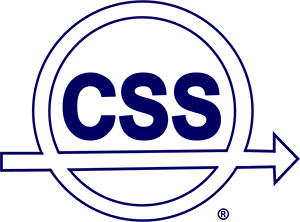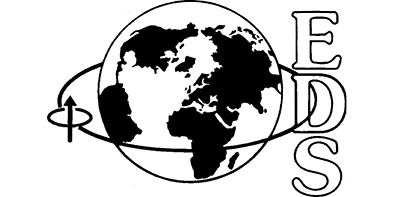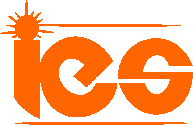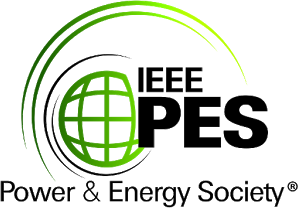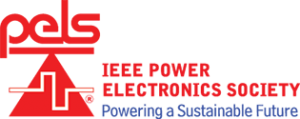7th IEEE Internet of Things (IoT) Vertical and Topical Summit at RWW2024
“Intelligent Biomedical IoT Applications: Sensing, Processing, and Communications”
A hybrid event conducted from January 24th through February 2nd, 2024.
By
Adam T. Drobot, J.-C. Chiao, Jasmin Grosinger, and Charlie Jackson
The seventh IEEE Internet of Things (IoT) Vertical and Topical Summit at Radio & Wireless Week 2024 (RWW2024) is devoted to biomedical IoT applications. Technologies for sensing, signal processing and computing, data storage, and communications are important ingredients in architecting biomedical solutions that are important to human health and human well-being. There are at least five aspects to biomedical IoT applications that are important for the general population. They include: (1) the practice of medicine; (2) public health; (3) personal lifestyle; (4) environmental exposure; and (5) biomedical research. The select list of references [1-16] indicates that electronics play an increasingly important role in the evolution of biomedical devices and solutions. Many of the advancements in the field have significantly benefited from the pace of innovation in the capabilities and performance improvements in electronics and the exploitation of methods and techniques for measuring and generating electromagnetic signals across the spectrum – from light to microwave frequencies. They have also benefited from the ability to create new materials, miniaturize electronic components, embed sophisticated signal processing and computation in devices, and lastly, harness new sensing and actuation methods such as the uses of MEMS (microelectromechanical system) and microfluidic devices and data interpretation techniques such as the breakthroughs in Artificial Intelligence (AI) and Machine Learning (ML) algorithms.
The applications range from personal wearables, widely available as consumer goods, to specialized medical instrumentation focused on specific diseases or conditions. They cover the detection of pathogens in our environment, direct monitoring and management of chronic disease symptoms, and ways of dealing with human impairments through devices that restore or enhance body functions. The science and engineering involved are multi-disciplinary and require collaboration between technical and professional disciplines and communities of practice. The fusion of biological sciences with advances in the physical, mathematical, and chemical sciences and engineering led to concepts such as personalized medicine to manage health, taking advantage of personal data based on genomics and physiological data based on an individual’s condition and history.
Biomedical devices are increasingly used in the digitization of healthcare for monitoring, imaging, diagnosis, and detection of diseases, their treatment, and management.
In this setting, the Internet of Things plays an important role in providing connectivity for the collection of data from sensors and other sources, access to the resources for analysis and interpretation, and connectivity to distributed decision processes that result in subsequent treatments or regimens. The engineering of biomedical systems and solutions first depends on medical and biological understanding at an increasingly granular level and second on the future evolution of the digital and analog electronics that make the Internet of Medical Things possible, safe, and sustainable. The new element here is that sensor devices and networks provide new insights from time-resolved and spatially resolved data that track conditions and can also access powerful analytics and AI/ML processing to create insights. One of the purposes in the Summit is to promote the interaction between the biomedical and engineering communities, assess the current status of underlying technologies, and identify critical areas of research and pathways to progress. This includes the designs of devices and networks, the systems tradeoffs between computing, data storage, and communications, the efficient use of energy, and improvements in the specificity of information, spectrum use, biological and medical relevance, and practical implementation of the systems.
The IoT Vertical Summit will be held in two parts. The first part will be conducted in conjunction with IEEE Radio and Wireless Week - RWW2024 in San Antonio, Texas, as a hybrid event. This consists of two sessions, each two hours in duration, on the afternoon of January 24th, 2024. The sessions include attendance, either in-person or live online. We would very much like to encourage in-person attendance for this portion of the summit. The second part is a week of daily two-hour sessions delivered virtually live online from January 29th – February 2nd, 2024. We have chosen the format and timing of the summit to attract speakers and attendees participation from around the world. From past experience, this format makes it easier to attract the best experts and to explore the subject based on a variety of deployment settings and diverse points of view. The summit seeks to provide a balance of perspectives as in the past and will include speakers from industry, government, the research community, and end users. The presentations and discussions will address technical, business, operational, and policy issues.
Speakers
There are multiple objectives that the Summit aspires to:
(1) First is a high degree of interaction between the speakers and the audience. We encourage all speakers to participate in as many sessions as possible, not just in the session where they are the primary presenters. The format of each session consists of presentations by the speaker and a moderated discussion with open Q&A from the audience.
(2) Second, we seek to attract the best subject matter experts for the topics covered by the Summit. Consequently, the majority of the speakers are chosen by invitation. The Summit will also accommodate a limited number of additional speakers whose presentations address the subjects we have listed and whose proposals for presentation align with the theme of the Summit.
(3) Third, the dialog at the summit leads to subsequent actions that speed and nurture the adoption of Biomedical IoT deployments and solutions for the benefit of society.
Each session will be two hours in length with two to four presenters and will conclude with a moderated discussion, including an open Q&A with the audience. We require all speakers and attendees to register for the summit. This can be done through the RWW2024 Website at: https://www.radiowirelessweek.org/
Program
The website and program for the upcoming summit as well as presentation material from past summits can be found through the following links:
Hybrid – In-Person and Virtual, Virtual – Live Online |
In selecting speakers, we have asked each of them to prepare material for a general but knowledgeable audience. The material presented will be informational in nature, addressing multidisciplinary subjects that should appeal to individuals working on technologies important to the IEEE MTT Society, to the IEEE IoT Technical Community, specialists in Biosensors, and the Medical professions. The emphasis is on practical results and the sharing of experiences from actual demonstrations, trials, and deployments.
Biomedical device and system applications of IoT are not new, but significant public sector and commercial investments have seen rapid progress in the underlying technologies. At the same time, the use and acceptance of IoT solutions has also seen double-digit expansion in deployments for sectors related to public health and the practice of medicine. You will find the summit stimulating and rewarding if you are a policy maker, an administrator, a product manager, a technologist, a practicing electronics engineer, or a researcher, or just curious about the progress and promise of biomedical devices and systems.
Please join us in person or online for the hybrid portion of the program on Wednesday, January 24th, 2024, in San Antonio, Texas, and live online for the virtual sessions conducted January 29th – February 2nd, 2024. We look forward to your active participation as an attendee or as a presenter.
Select References
[1] Algburi, Mohaimen Q.: “Wearable Antenna Design for IoT and Biomedical Applications”, LAP Lambert Academic Publishing, 132 pages, October 11, 2022. [ISBN-13: 978-6205509890]
[2] Al-Turjman, Fadi: “Internet of Nano-Things and Wireless Body Area Networks (WBAN)”, Auerbach Publications, 1st Edition, 256 pages, August 29, 2022. [ISBN-13: 978-1032401485]
[3] Chakraborty, Chinmay; Ghosh, Uttam; Ravi, Vinayakumar; and Shelke, Yogesh; Editors: “Efficient Data Handling for Massive Internet of Medical Things: Healthcare Data Analytics (Internet of Things)”, Springer, 1st Edition, 402 pages, September 2, 2021. [ISBN-13: 978-3030666323]
[4] Dincer, Can; and Morales-Narvaez, Eden; Editors: “Wearable Physical, Chemical and Biological Sensors”, Elsevier, 1st Edition, 328 pages, March 14, 2022. [ISBN-13: 978-0128216613]
[5] Garfield, Daniel: “Biotechnology and Bioinformatics: From Gene Editing to Personalized Medicine”, Independently Published, 111 pages, June 20, 2023. [ ISBN-13: 979-8399092515]
[6] Gupta, Manoj; Kumar, Arun; Aggarwal, Basant; and Cengiz, Korhan; Editors: “5G Wireless Communication System in Healthcare Informatics (Advances in Antenna Design, Wireless Communication and Mobile Network Technology)”, CRC Press, 1st Edition, 196 pages, May 9, 2023. [ISBN-13: 978-1032312194]
[7] Kaniusas, Eugenijus: “Biomedical Signals and Sensors III: Linking Electric Biosignals and Biomedical Sensors (Biological and Medical Physics, Biomedical Engineering)”, Springer, 1st Edition, 625 pages, August 30, 2019. [ISBN-13: 978-3319749167]
[8] Li, Changzhi; Tofighi, Mohammad-Reza; Schreurs; and Horng, Tzyy-Sheng Jason: “Principles and Applications of RF/Microwave in Healthcare and Biosensing”, Academic Press, 1st Edition, 342 pages, November 7, 2016. [ISBN-13: 978-0128029039]
[9] Pal, Kunal; Kraatz, Heinz-Bernhard; Khasnobish, Anwesha; Bag, Sandip; Banerjee, Indranil; and Kuruganti, Usha; Editors: “Bioelectronics and Medical Devices: From Materials to Devices - Fabrication, Applications and Reliability (Woodhead Publishing Series in Electronic and Optical Materials)”, Woodhead Publishing, 1st Edition, 1006 pages, July 2, 2019. [ISBN-13: 978-0081024201]
[10] Pasquarelli, Alberto: “Biosensors and Biochips (Learning Materials in Biosciences)”, Springer, 1st Edition, 328 pages, August 20, 2021. [ISBN-13: 978-3030764685]
[11] Raad, Haider: “The Wearable Technology Handbook: The Metaverse Edition”, Ohio Publishing & Academic Services, 239 pages, June 1, 2022. [ISBN-13: 978-1737233480]
[12] Sazonov, Edward; Editor: “Wearable Sensors: Fundamentals, Implementation, and Applications”, Academic Press, 2nd Edition, 660 pages, November 27, 2020. [ISBN-13: 978-0128192467]
[13] Tong, Raymond; Editor: “Wearable Technology in Medicine and Healthcare”, Academic Press, 1st Edition, 340 Pages, August 10, 2018. [ISBN-13: 978-0128118108]
[14] Vipiana, Francesca; and Crocco, Lorenzo; Editors: ”Electromagnetic Imaging for a Novel Generation of Medical Devices: Fundamental Issues, Methodological Challenges, and Practical Implementation”, Springer, 1st Edition, 372 pages, June 30, 2023. [ISBN-13: 978-3031286650]
[15] Whittow, William; Editor: “Bioelectromagnetics in Healthcare: Advanced sensing and communications applications (Electromagnetic Waves)”, Scitech Publishing, 338 pages, September 2, 2022. [ISBN-13: 978-1839533495]
[16] Zaleski, John: “Connected Medical Devices: Integrating Patient Care Data in Healthcare Systems”, HIMSS Publishing, 1st Edition, 234 pages, March 27, 2015. [ISBN-13: 978-1938904783]



